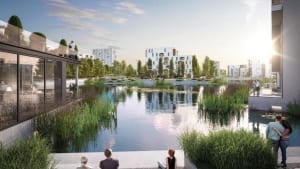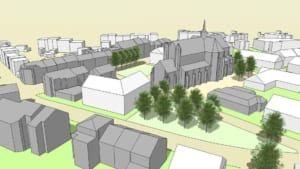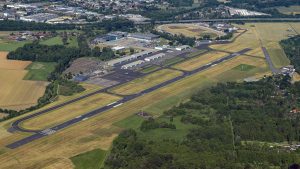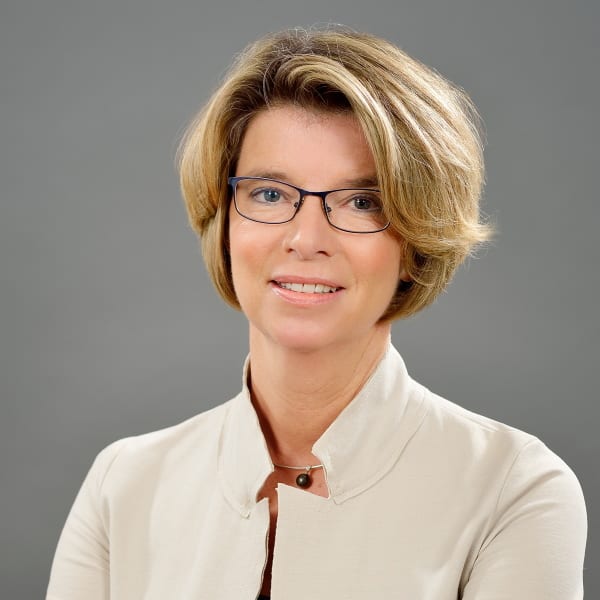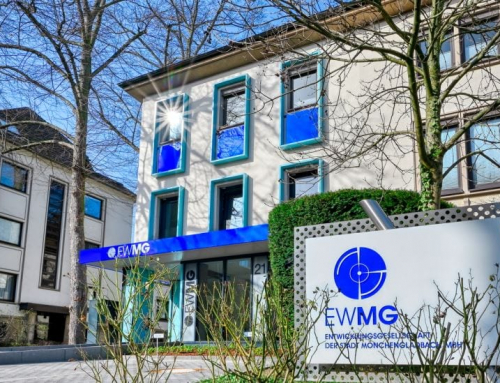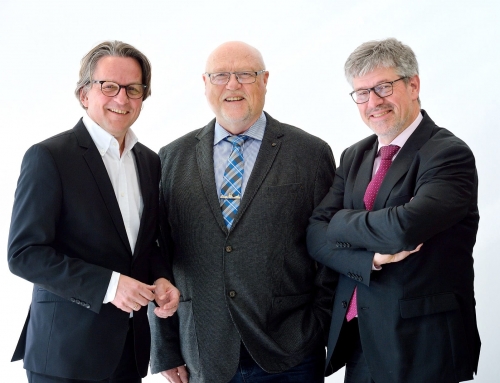In May 2019, project and urban developers will be meeting at the fifth polis Convention in Düsseldorf. In line with “Distance”, the motto of the convention, the city of Mönchengladbach, together with EWMG, its development company, and WFMG, its business development company, will be demonstrating how links can be created between people and places. In this context, Mönchengladbach is committed to providing urban planning stimuli.
Example: Maria Hilf terraces. On the site of the former Maria Hilf Hospital, demolition work is to start in 2019 to pave the way for the new residential quarter which promises “homes for everyone”. In the heart of the city, a green urban district with an area of 4.4 hectares where people can enjoy living together is being created. This district will have few cars, will be barrier-free and will have excellent links to the business centre of Mönchengladbach. Marketing efforts already put the emphasis on diversity. “We are ensuring an appropriate mixture of residential development types and homes using a variety of tendering procedures,” says Dr. Gregor Bonin, City Director and Technical City Councillor of Mönchengladbach. In addition, encounter points will help in overcoming “distances” within society. polis visitors are invited to find out more during a virtual tour of the planned inner-city district.
“The Maria Hilf terraces offer extremely bright prospects for the townspeople and for investors,” says Dr. Ulrich Schückhaus, Chairman of the Board of Management of EWMG and Managing Director of WFMG. “Now is the time to play your part in shaping the development of Mönchengladbach.” There are many opportunities to do so: on the REME site, which was formerly used for military purposes, a varied mix of homes and businesses are planned in an area of 13 hectares. Around the main station, an entirely new city district, Seestadt mg+, with an area of 14 hectares is being created and Mönchengladbach Airport offers sites with potential for aviation-related businesses.
Area-wide growth is a joint task, which is why Mönchengladbach is also presenting urban development projects from six partner companies at the convention: Bienen & Partner, Schrammen Architekten BDA, ottenarchitekten gmbh, DORNIEDEN Generalbau GmbH and STRABAG Real Estate GmbH as well as the Bema Group.
Creating links
Mönchengladbach is a large, diverse city. To this day, the polycentric structure with two main stations and two city centres is a special feature. The city of Mönchengladbach was only created in 1975 from the independent towns of Mönchengladbach, Rheydt and Wickrath. There are also some more rural districts grouped around the two urban centres like satellites. In order to reduce distances, the two centres are to be linked more closely through urban development. The connecting element is to be the Hochschulquartier, which is to be developed into a vibrant campus and an attractive residential and business area.
A dedicated local development plan indicates possible measures for ensuring the better integration of Hochschule Niederrhein University of Applied Sciences in the urban environment of the district. “In the final resort, the objective is not only to establish a higher education location that is competitive at the national level but also to provide high-quality employment and training opportunities in the city,” Bonin explains. He adds that the Blauhaus and the recently inaugurated Textile Academy have already provided new stimulus in the fields of education and urban development.



